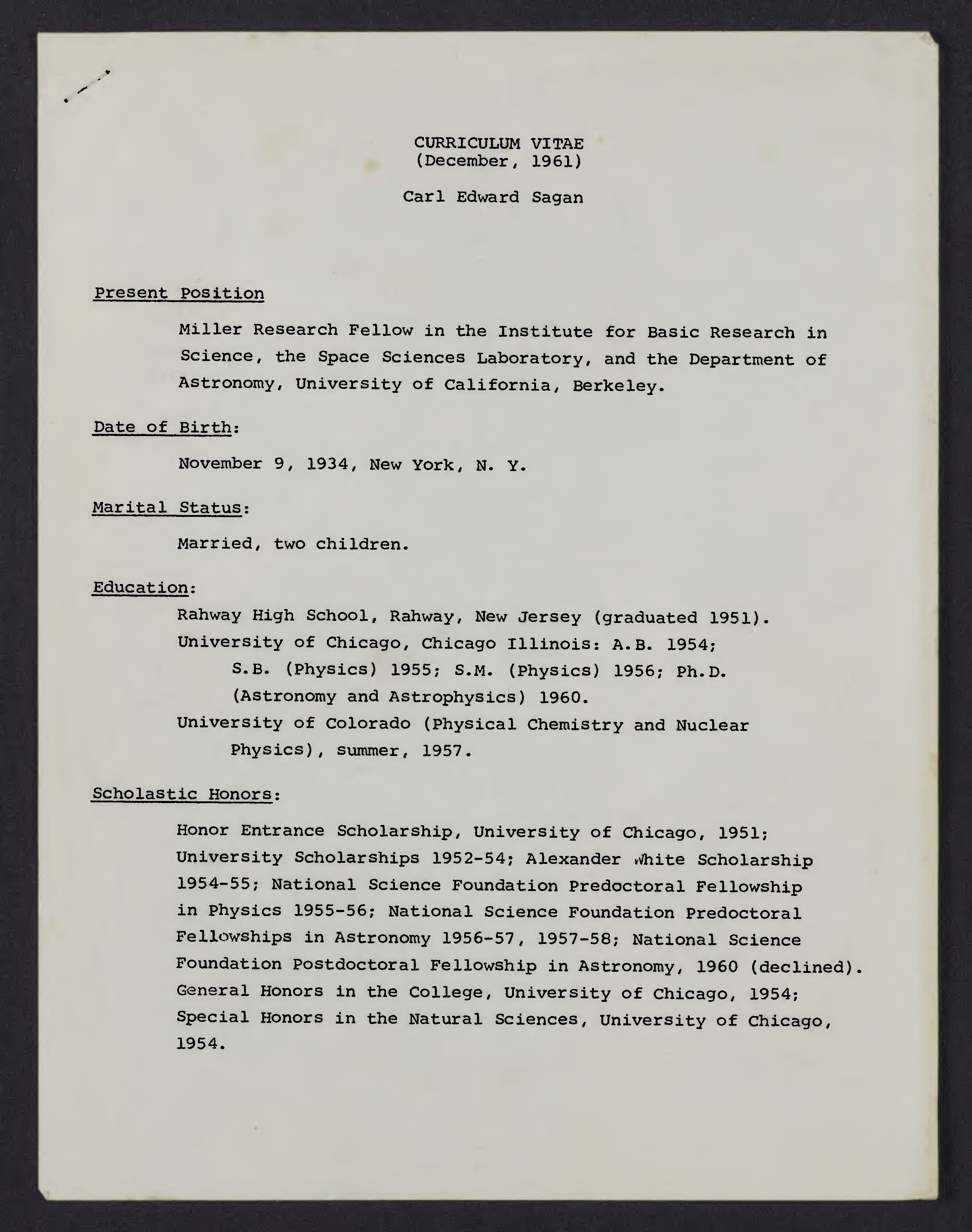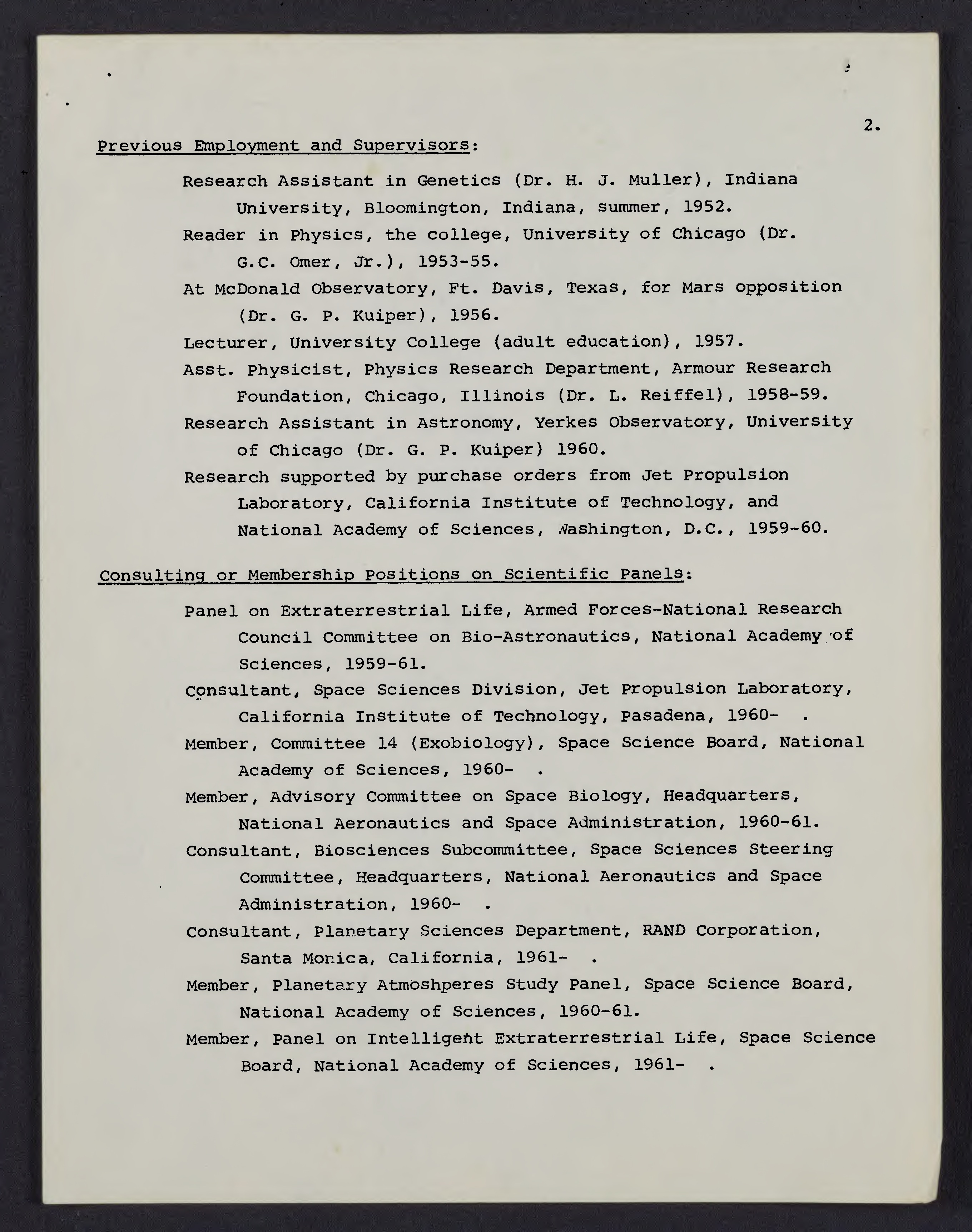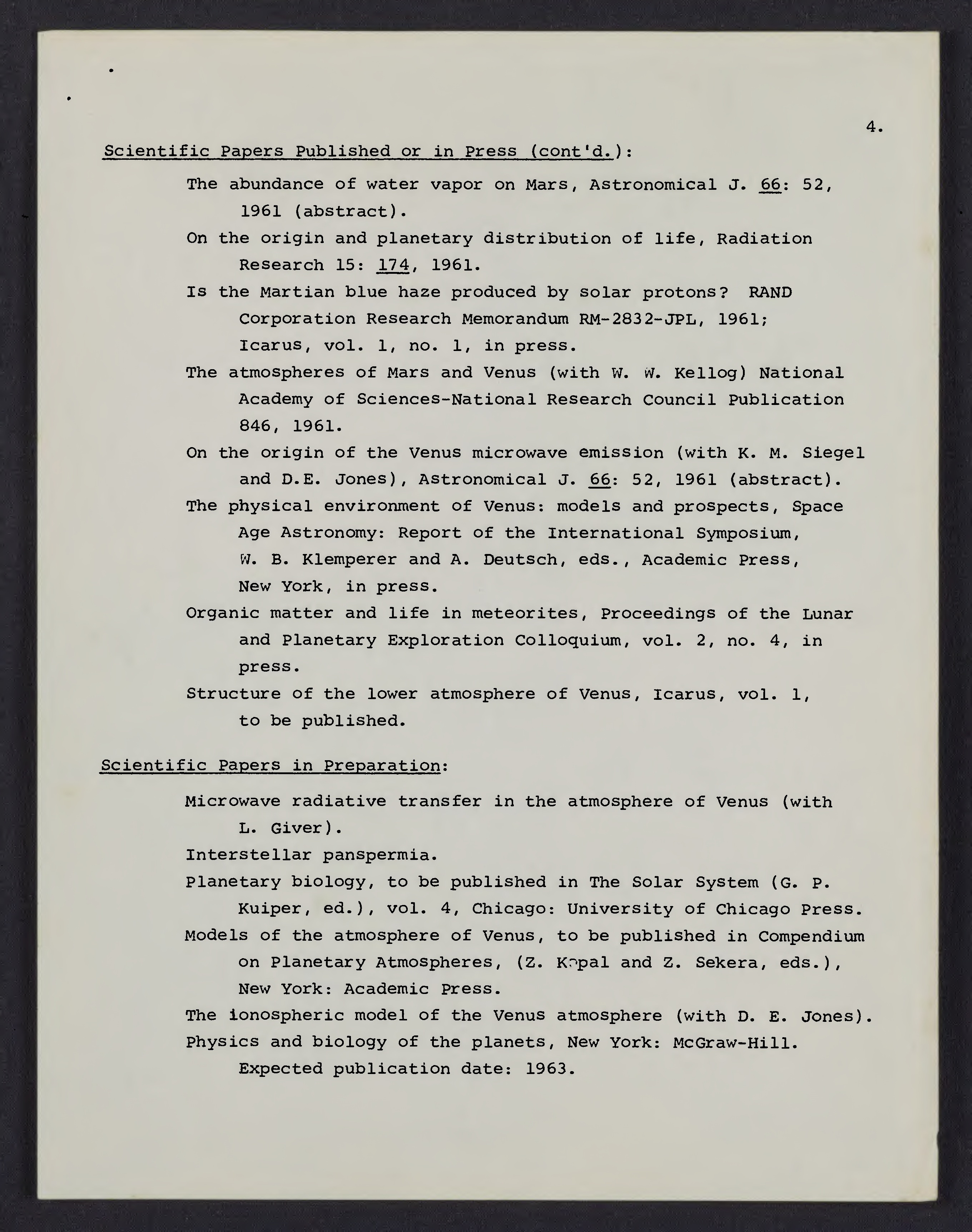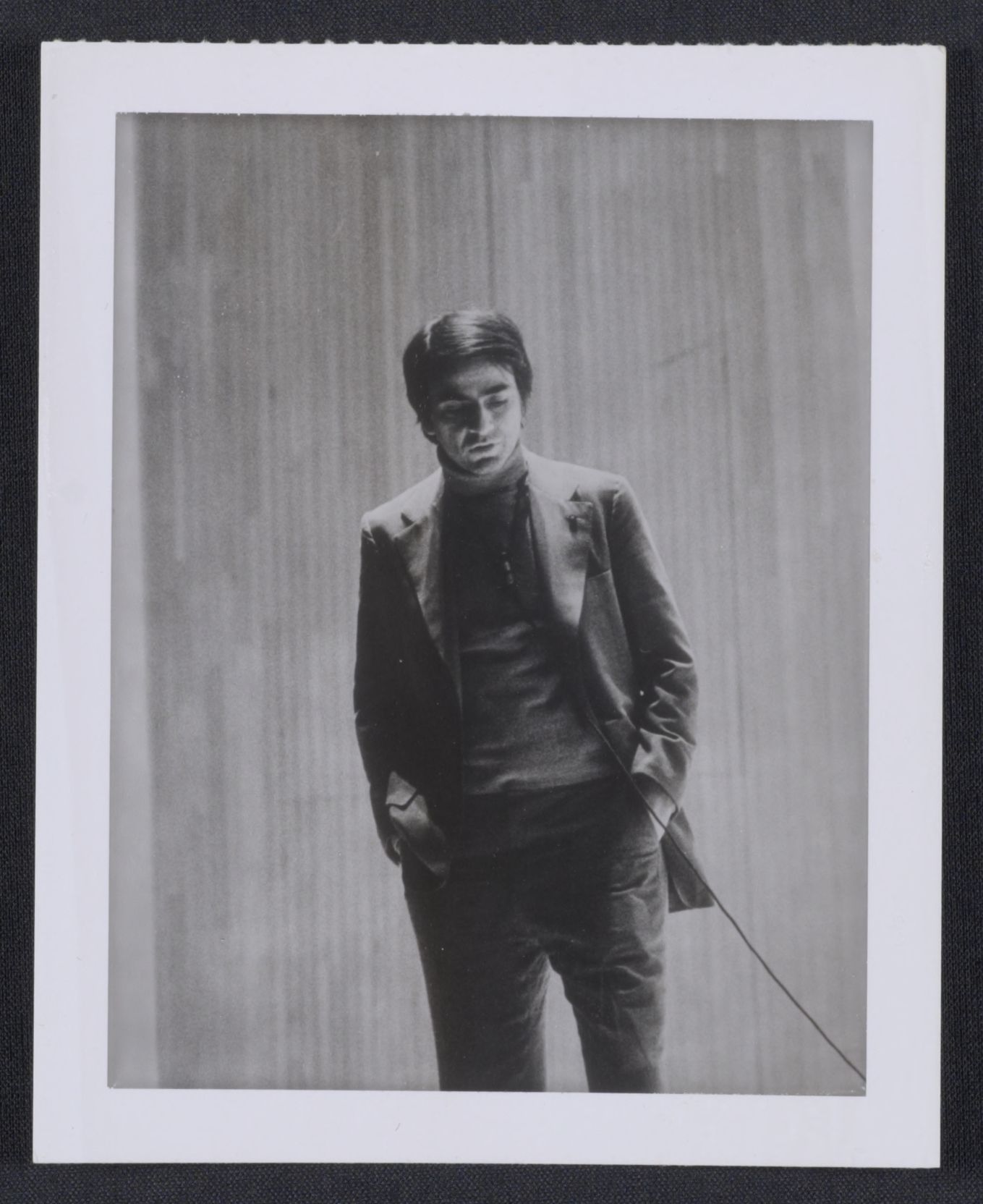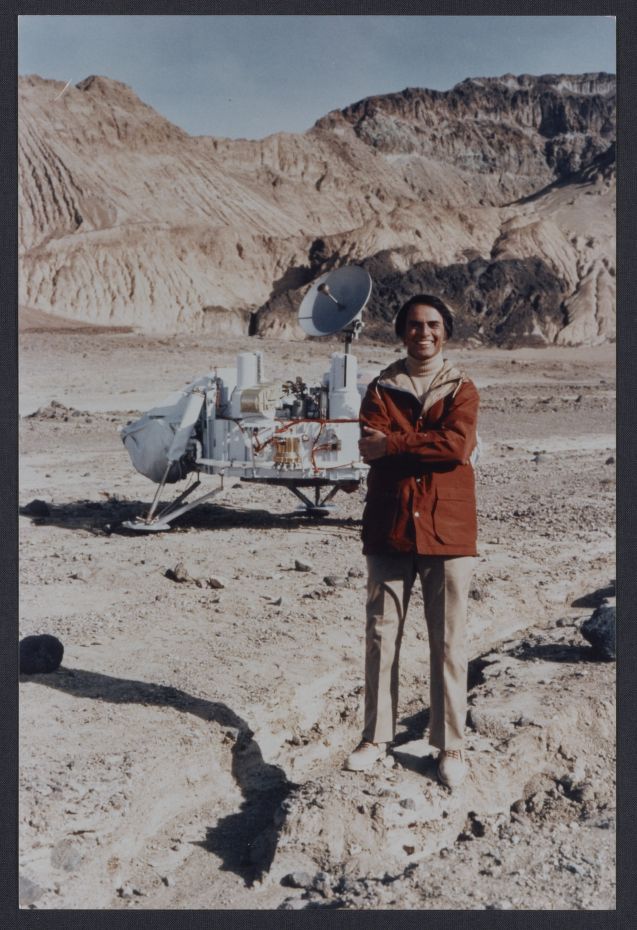Among the papers Carl Sagan (1934-1996) housed at The Library of Congress is his 1954 reading list from when he was a student at the University of Chicago.
Literary works on the list include: André Gide’s The Immoralist, Aldous Huxley’s short story Young Archimedes, Robert Maynard Hutchins’s Education for Young People, William Shakespeare’s Julius Caesar, Elmer Holmes Davis’ But We Were Born Free and what appears to be the first volume of Star Science Fiction Stories (1953), which includes stories by Isaac Asimov, Ray Bradbury, and Arthur C. Clarke, among others.
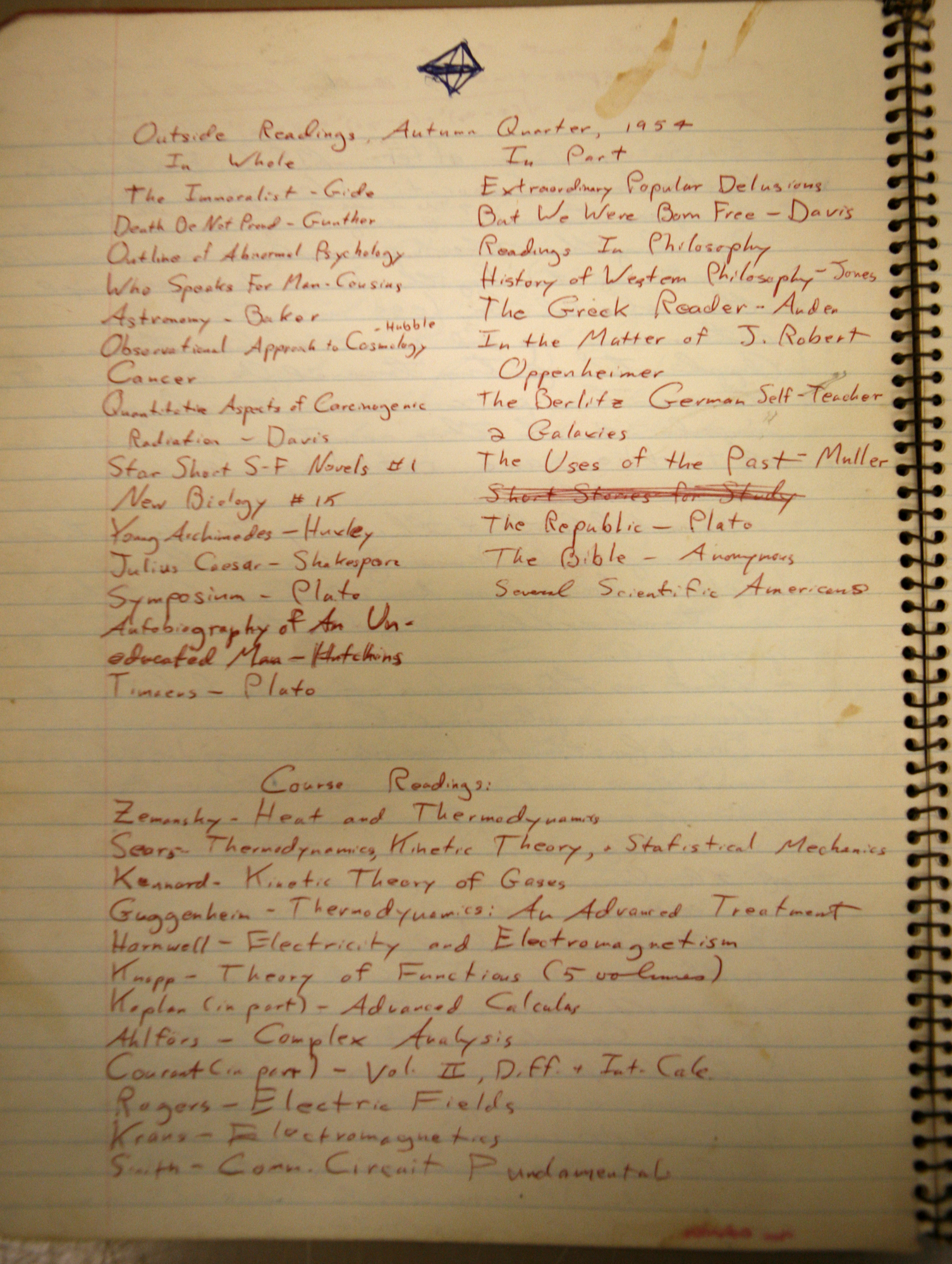
List of titles that Carl Sagan planned to read during one of his semesters at the University of Chicago. Library of Congress Manuscript Division
Sagan’s love for books is clear. It was a lifetime passion for a curious mind. As he enthused in 1980:
What an astonishing thing a book is. It’s a flat object made from a tree with flexible parts on which are imprinted lots of funny dark squiggles. But one glance at it and you’re inside the mind of another person, maybe somebody dead for thousands of years. Across the millennia, an author is speaking clearly and silently inside your head, directly to you. Writing is perhaps the greatest of human inventions, binding together people who never knew each other, citizens of distant epochs. Books break the shackles of time. A book is proof that humans are capable of working magic.
And what are ideas if not bursts of magic?

Carl Sagan’s senior high school yearbook, below the photo: Astronomy research is Carl’s main aim; An excellent student, he should achieve fame. 1951, Rahway High School yearbook
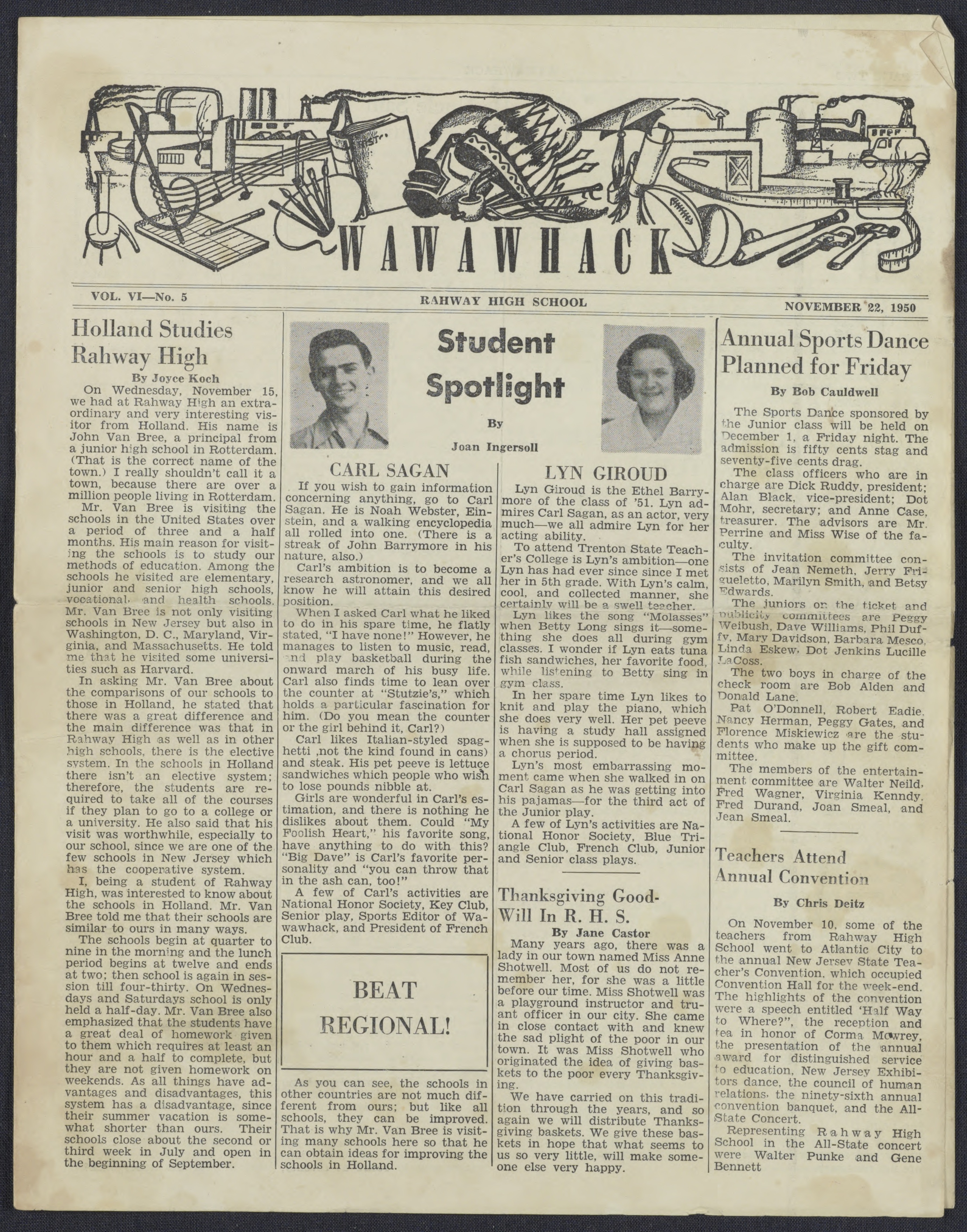
Wawawhack, the Rahway High School student newspaper, Vol. VI, No. 5. A student spotlight article on Sagan from his high school newspaper opened, “If you wish to gain information concerning anything, go to Carl Sagan. He is Noah Webster, Einstein, and a walking encyclopedia all rolled into one” and that his “ambition is to become a research astronomer.”
As Rosamund E. M. Harding (1899-1982) notes in her 1942 tome An Anatomy of Inspiration:
Originality depends on new and striking combinations of ideas. It is obvious therefore that the more a man knows the greater scope he has for arriving at striking combinations. And not only the more he knows about his own subject but the more he knows beyond it of other subjects. It is a fact that has not yet been sufficiently stressed that those persons who have risen to eminence in arts, letters or sciences have frequently possessed considerable knowledge of subjects outside their own sphere of activity.
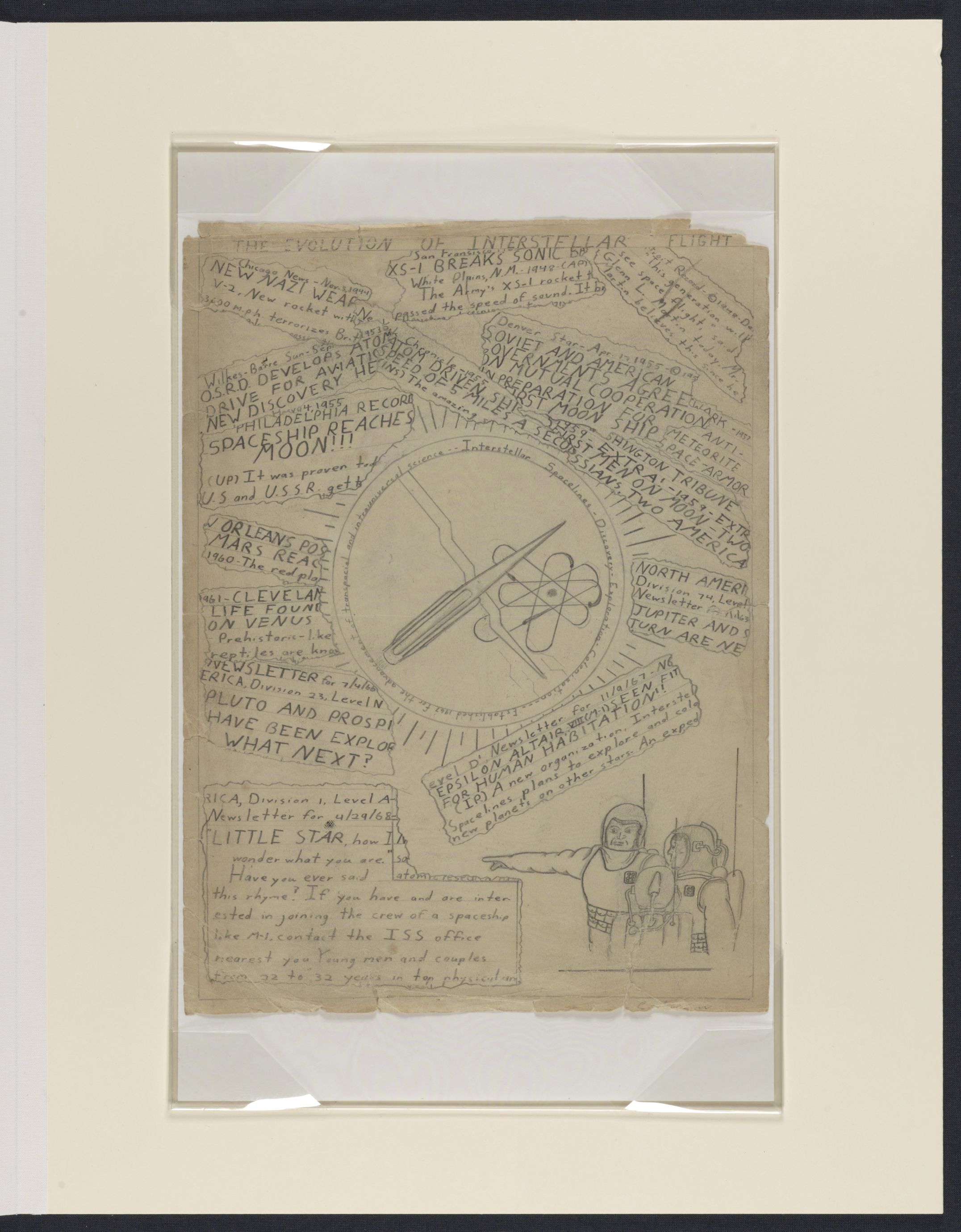
The Evolution of Interstellar Space Flight by Carl Sagan – 1944. Sagan was captivated by Edgar Rice Burroughs’ stories of John Carter and his exploits on the planet Mars. So much so that on several occasions he tried to recreate John Carter’s journey to the red planet. Carter traveled to Mars by standing in an open field with his arms outstretched and wishing hard enough to transport him there. When Sagan tried it as a child he couldn’t quite get this method to work.
Did an elective and deep reading list help Sagan reach his potential? We can get a clue from Sagan’s 1961 CV. This resume runs for a full five pages.
Via Brain Pickings
Would you like to support Flashbak?
Please consider making a donation to our site. We don't want to rely on ads to bring you the best of visual culture. You can also support us by signing up to our Mailing List. And you can also follow us on Facebook, Instagram and Twitter. For great art and culture delivered to your door, visit our shop.


